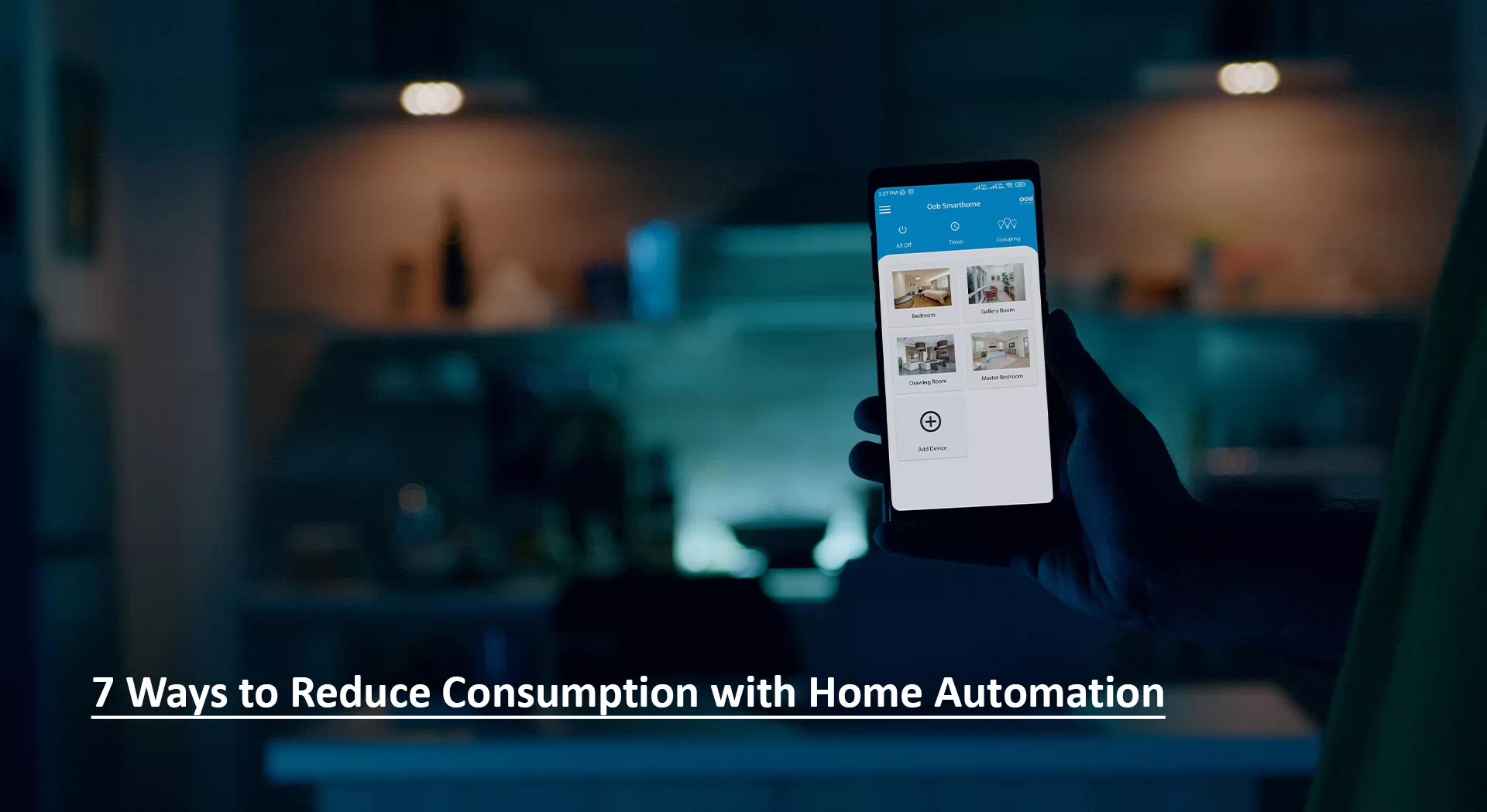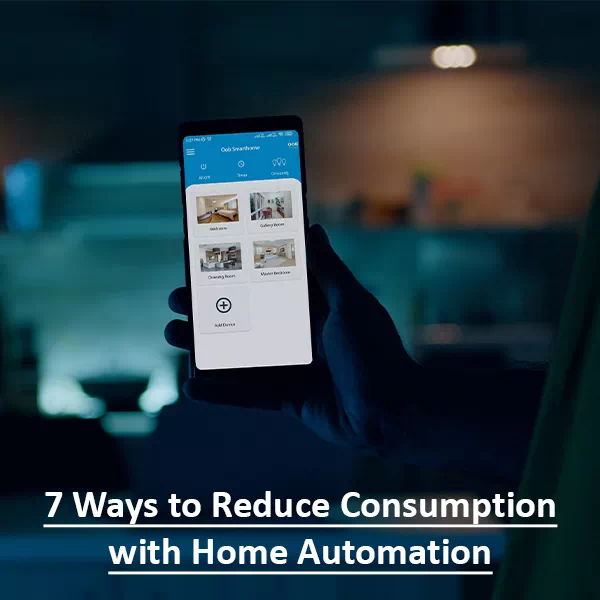One of the most effective ways to reduce consumption with home automation is by installing smart thermostats. These devices can learn your household's temperature preferences and adjust accordingly, saving energy and money in the process. Additionally, you can control these thermostats remotely, allowing you to turn off heating or cooling systems when no one is home. Another way to reduce consumption with home automation is by using smart lighting. By installing motion sensors or timers, you can ensure that your lights are only on when needed. You may also set up a schedule for your lights to automatically turn off during certain times of the day or night.
Home automation also allows for more efficient water usage through automatic faucets and showerheads. These fixtures can save water by only turning on when someone is present and shutting off when they leave. Overall, incorporating home automation into your daily routine is an environmentally friendly way of reducing consumption while making life easier and more convenient at the same time!
Here you will get the best way to reduce consumption with home automation.
Temperatures Regulated
One of the most effective ways to reduce consumption with home automation is by regulating the temperature in your home. Smart thermostats are becoming increasingly popular as they allow homeowners to have more control over their heating and cooling systems. These devices can learn your daily routine, adjusting the temperature accordingly, and can even be controlled remotely through a smartphone app.
Another option to regulate temperatures is through smart blinds or shades. These devices can automatically adjust based on the amount of sunlight entering a room, helping to prevent unnecessary heating or cooling throughout the day. This not only reduces energy consumption but also helps to prolong the life of furniture and flooring that may be damaged by prolonged exposure to sunlight.
For those who live in areas with extreme weather conditions, such as hot summers or cold winters, investing in proper insulation and weather stripping can make a huge difference in regulating temperatures without relying heavily on HVAC systems. This will not only save energy but also lead to significant cost savings over time. With these options available, it's easy to see how home automation technology can help reduce consumption while maintaining comfort levels throughout your living spaces.
Standby Appliances
Easiest ways to reduce your energy consumption at home is by addressing standby appliances. These are appliances that stay plugged in even when they're not being used, such as TVs or chargers that remain plugged in even when they're not actively charging a device. While these appliances seem harmless, they can actually account for up to 10% of your household energy use.
Fortunately, there are many easy ways to address standby appliance usage in your home. One option is to purchase smart power strips that automatically turn off outlets when devices aren't in use. Another option is to manually unplug appliances when you're not using them, though this requires more effort and may be less convenient.
Ultimately, taking steps to address standby appliance usage can help you save money on your monthly energy bills while also reducing your overall environmental impact. With a little bit of effort and investment in the right tools, anyone can make significant progress towards a more sustainable lifestyle at home.
Automated Lighting
One significant way to reduce energy consumption in your home is through automated lighting. Automated lighting systems allow you to control when and how long lights are on, which can significantly reduce wasted energy. With the help of motion sensors, automated lighting can turn off lights that are not being used in a specific room or area.
Additionally, smart bulbs have features like dimming and color-changing options, which can be set according to time or mood preferences. These bulbs are also programmable with voice commands and compatible with virtual assistants like Google Home or Amazon Alexa.
Automated lighting systems can also be linked with other smart devices such as security cameras and thermostats for a complete home automation system. This integration ensures that any lights left on will automatically shut off when the system detects no movement within the house for an extended period. Overall, implementing an automated lighting system is an excellent investment for homeowners looking to save energy while reducing their utility bills.
Decision Making
When it comes to making decisions about reducing energy consumption in your home, there are several factors to consider. Home automation technology can make it easier to achieve your goals by providing you with more control over your energy usage. One way that this works is through the use of smart thermostats. These devices can help you regulate the temperature in your home and optimize energy usage throughout the day. By using them, you can save money on utility bills while still enjoying a comfortable living environment.
Another key aspect of decision-making when it comes to home automation is choosing which devices to invest in. There are many different types of home automation products available on the market today, ranging from simple timers for lights and appliances to more sophisticated systems that monitor everything from water usage to air quality. It's important to evaluate your specific needs and budget before making any purchases so that you can choose the right combination of products for your home.
Ultimately, effective decision-making when it comes to reducing energy consumption with home automation requires careful planning and consideration of all available options. By taking into account factors such as cost, functionality, and efficiency, you can create a comprehensive plan that will help you achieve your goals while also minimizing waste and promoting sustainability in every aspect of daily life.
Smart Lighting
One of the most significant ways to reduce consumption with home automation is through smart lighting. Smart lighting systems allow homeowners to control their lights remotely, set schedules, and even adjust the brightness or color temperature. By doing so, you can ensure that you're not leaving the lights on when you're not at home or using more energy than necessary.
Smart lighting systems also offer advanced features such as motion sensing and daylight sensors that can further optimize energy consumption. Motion sensors detect movement in a room and turn on/off the lights automatically while daylight sensors can adjust the light intensity according to natural light available in a room.
Automated Blinds
Automated blinds are an excellent way to reduce energy consumption in your home. By using smart technology, homeowners can set their blinds to open and close at specific times of the day, depending on the amount of natural light available. This feature is particularly useful during summer when excessive heat from direct sunlight can make indoor spaces uncomfortable.
Another benefit of automated blinds is that they offer privacy and security for homeowners. With a simple click of a button or voice command, you can adjust the position of all your blinds in one go. This feature ensures that prying eyes cannot peep into your home's interior space while also deterring potential burglars by giving an illusion that someone is always present inside.
Moreover, automated blinds come with various customization options that allow you to personalize them according to your requirements. You can choose from different types of fabrics, colors, and patterns that match your interior décor and style preferences. In conclusion, incorporating automated blinds as part of home automation not only reduces energy bills but also enhances comfort levels while ensuring privacy and security for homeowners.
Turn Off Items You Don’t Use
Turning off items that you don't use is an essential step in reducing your energy consumption. Home automation systems can make it easier to turn off these items by programming them to automatically switch off when not in use. For example, if you have a home theatre system, you can program the automation system to turn off the projector and speakers after a certain amount of time of inactivity.
Another way to reduce energy consumption with home automation is by using smart thermostats. These thermostats allow your heating and cooling system to be programmed based on your daily routine or occupancy of the house. This means that you won't be wasting energy heating or cooling an empty house.
Home automation systems can help reduce water consumption as well. You can program your appliances such as dishwashers and washing machines to run during non-peak hours when there's lower demand for electricity, helping save both money and resources. Overall, turning off items that are not needed through home automation will lead to significant savings on utility bills while also helping the environment by reducing carbon emissions from power generation plants.
Conclusion:
In conclusion, implementing home automation systems can significantly reduce energy consumption in households. By controlling lights, temperature, and other appliances remotely, homeowners can save money on their utility bills and contribute to a more sustainable environment. Additionally, using smart thermostats can ensure that heating and cooling systems operate only when necessary, leading to further energy savings.
Furthermore, the use of motion sensors and timers for lighting can prevent unnecessary usage when rooms are unoccupied. This approach is especially useful for outdoor lighting which tends to consume significant amounts of energy over time. Lastly, by investing in efficient appliances that are compatible with home automation technology such as smart refrigerators or washing machines with automatic scheduling features can lead to additional savings in electricity and water usage.


